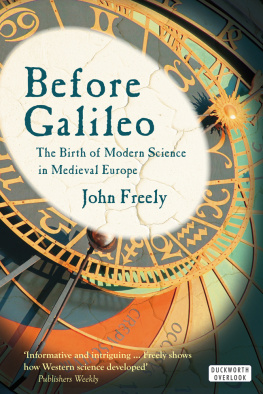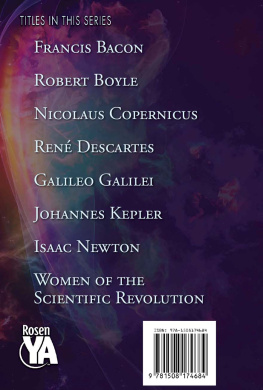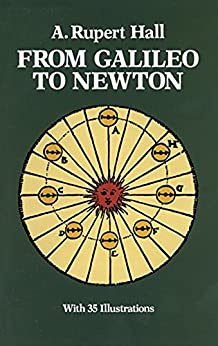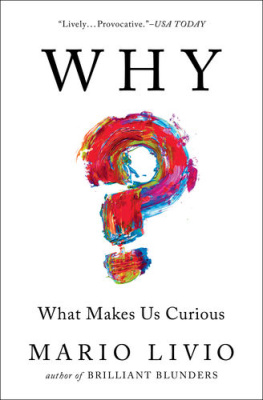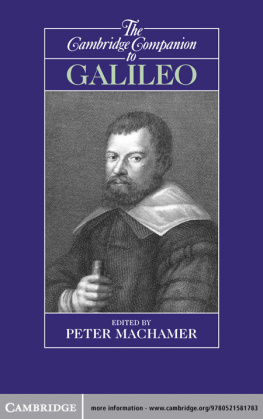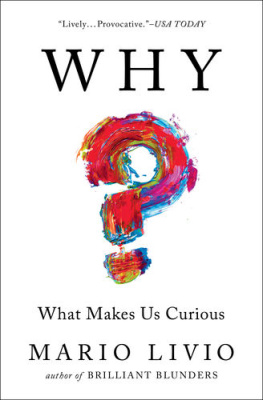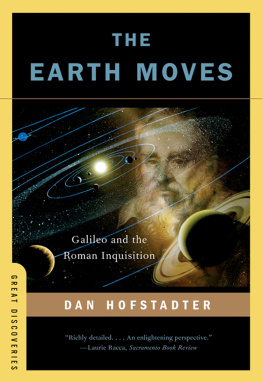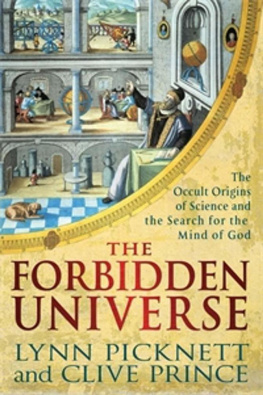All rights reserved. No part of this publication may be reproduced, stored in a retrieval system, or transmitted, in any form or by any means, electronic, mechanical, photocopying, recording or otherwise, without the prior permission of the publisher.
Introduction
W HEN I FIRST STARTED TEACHING PHYSICS, THE STANDARD narrative was that modern science began with the heroic efforts of Galileo to gain acceptance for the revolutionary sun-centered worldview of Copernicus, as opposed to the ancient geocentric cosmology of Aristotle and Ptolemy accepted by academia and the Church. It was this crusade that sparked the Scientific Revolution and culminated in the new physics and astronomy of Newton, at the dawn of the modern scientific age.
Virtually nothing was said in this narrative about the predecessors of Copernicus, Galileo, and Newton, although historians of medieval European civilization have in recent years traced back the beginning of science in the West more than a millennium before them. In reality, an impressive succession of European scholars opened the way for the Scientific Revolution, laying the foundations for the breakthrough theories and discoveries later made some of which they anticipated.
Before Galileo seeks to right this historical injustice, something I started thinking about while studying physics in college. I did my undergraduate studies on the GI Bill after World War II at Iona College in New Rochelle, New York, founded by the Irish Christian Brothers. The first thing I noticed on the campus was a statue of Saint Columba, patron saint of the Irish Christian Brothers who lived in the sixth century. Columba had been forced out of Ireland and founded a monastery on the west coast of Scotland on the island of Iona, the legendary burial place of Macbeth. His students went on to found other monastic schools in England and then on the Continent, beginning the reeducation ofwestern Europe in the Dark Ages, just as the Irish Christian Brothers who taught me had founded a college in a suburb of New York City, which they may have felt was in need of enlightenment. I certainly felt the need, for I had dropped out of school at seventeen to join the U.S. Navy, as had a number of my classmates.
My physics teacher at Iona was Brother Thomas Bullen, who had studied physics with P. M. S. Blackett, winner of the Nobel Prize in Physics in 1948. I knew that Blackett had studied at Cambridge under Lord Rutherford, the founder of nuclear physics, who was awarded the Nobel Prize in Chemistry in 1908. Rutherford in turn had studied at Cambridge with James Clerk Maxwell, the father of modern electromagnetic theory. Subsequently, with the aid of the Math-Physics Genealogy website, I was able to trace my scientific ancestry through Brother Bullen, Blackett, Rutherford, and Maxwell in an unbroken line that included Newton, Leibniz, Galileo, Copernicus, and on back to the first Greeks who graduated from Italian universities, and through them to George Gemistus Plethon, who graduated from the University of Constantinople circa 1375 and was the principal source in bringing Greek learning to Italy, giving rise to the Italian Renaissance. That the link was unbroken all the way to antiquity intrigued me. Who carried the torch in those dark years before Europes rebirth?
The most direct influence on this book, however, came from my postdoctoral study at All Souls College at Oxford with Alistair Cameron Crombie, renowned for his pioneering research in the history of medieval European science. After that, in addition to my courses in history and astronomy at what is now the University of the Bosphorus in Istanbul, I began teaching a course called The Emergence of Modern Science, East and West, a large part of which was based on what I had learned from Crombie, to which I have kept adding material on medieval European science up to the present day.
The principal idea that I inherited from Crombie was the continuity of western European science from the Dark Ages up through the times of Copernicus, Galileo, and Newton. More recent historians have questionedthis notion. Thomas Kuhns The Copernican Revolution (1957) and The Structure of Scientific Revolutions (1962) emphasized the paradigm shift involved in the heliocentric theory as evidence of a discontinuity of post-Copernican science with the scientific tradition that had developed in western Europe during the Middle Ages. Kuhn certainly has a point, but as Crombie wrote of Copernicus in his Medieval and Early Modern Science, first published in 1952: He is a supreme example of a man who revolutionized science by looking at the old facts in a new way. Crombie goes on to point out the theories and data that Copernicus had inherited from his medieval European and ancient Greek predecessors, which is what I have done more thoroughly here, adding the contributions made by Islamic and Byzantine scientists.
Before Galileo begins with a look at western Europe at the beginning of the Dark Ages, with the Visigoth sack of Rome in 410 and the burning soon afterward of the great Library of Alexandria, with its vast collection of all the Greek works from those of Homer onward, as the ancient Graeco-Roman world was coming to an end in the gathering darkness of the early medieval period.
The Alexandrine Library contained copies of all the works of Greek science from the Pre-Socratics through the great mathematical physicists and astronomers of the Hellenistic period. Socrates himself wrote nothing, but he taught Plato, who in turn taught Aristotle, who taught Theophrastus, and so on, starting the chain of teacher and student, which was broken by the collapse of classical civilization and the burning of the Library in Alexandria, with the loss of all of their works.
But a number of the classics of Greek science and philosophy survived through a tenuous Ariadnes thread that wound its way from Alexandria through the medieval Byzantine and Islamic worlds, involving, in the latter case, translations from Greek to Aramaic to Persian to Arabic, and then eventually into Latin.
Before these Latin translations became available in western Europe, only a few remnants of classical learning were preserved by increasingly isolated Roman scholars, most notably Boethius and Cassiodorus. But moresubstantial remains of classical learning made their way to the first Irish monasteries, principally those of Saint Columba, where a number of Greek-speaking scholars took refuge, crossing with him to Iona, beginning the reeducation of Europe and bringing light to the Dark Ages. Eventually this reeducation reached a high enough level for European scholars to understand Graeco-Arabic science in Latin translation, a process that accelerated with the founding of the first European universities in the twelfth and thirteenth centuries.

